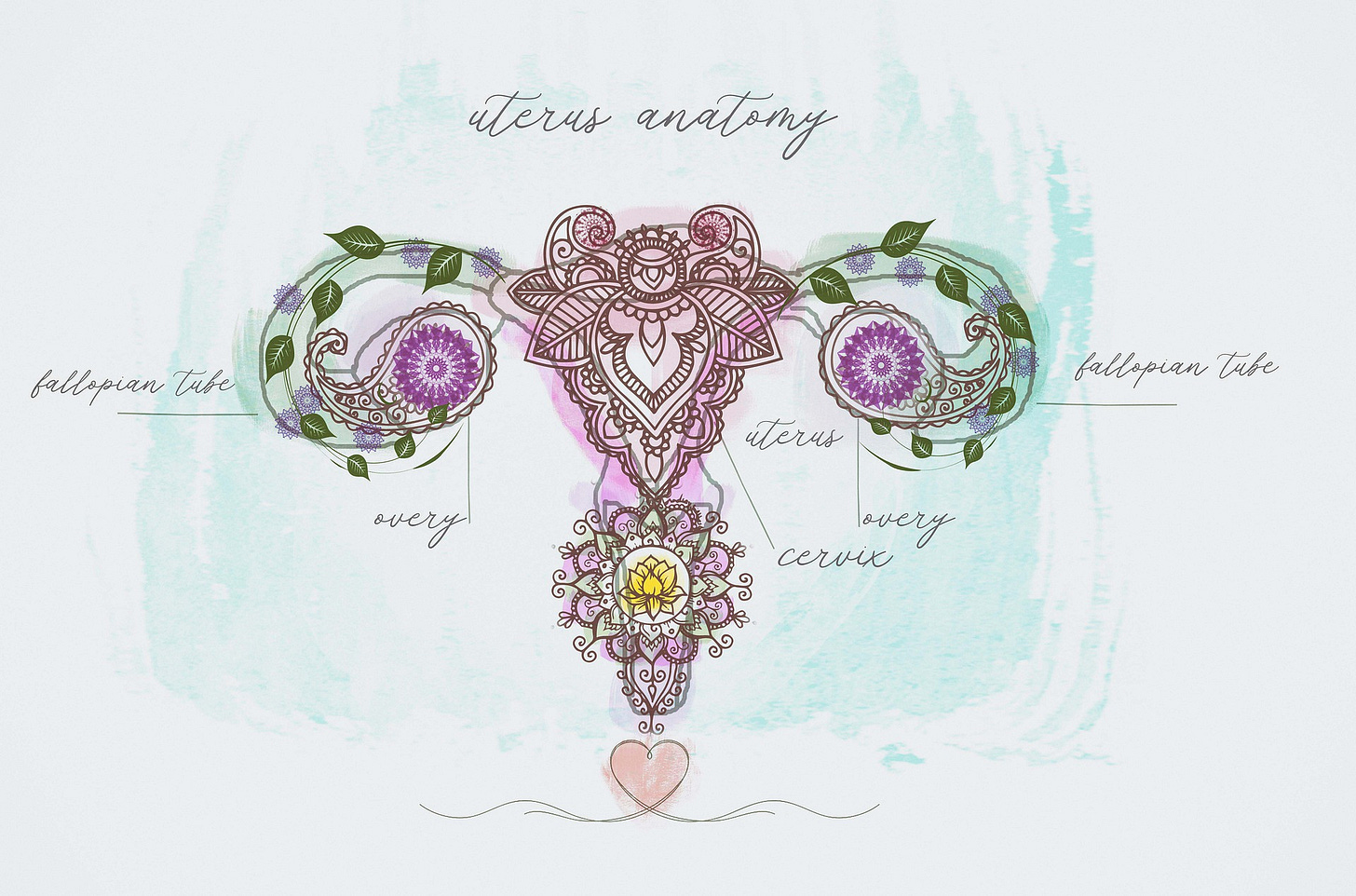
Imagine you’re waking up in the morning. You’re feeling nauseous, there’s a thousand tiny needles pricking your abdomen from the inside, and you’re completely exhausted despite just having slept for twelve hours. You have now scratched the surface of what it is like to have endometriosis, a common disease that a lot of people have never ever heard of, despite the fact that it has been discovered more than a century ago and is suspected to affect around 10% of reproductive age women (~190 million).
As we are nearing the end of Endometriosis Awareness Month, whose goal is to spread awareness and understanding, let us examine what endometriosis is, how you can recognize it, and what can be done about it.
What is it?
Endometriosis is a disease “in which tissue similar to the lining of the uterus grows outside the uterus”, causing severe pain and leading to a chronic inflammatory reaction of the body as it tries in vain to get rid of the tissue, which in its turn may lead to a whole range of effects like fatigue, concentration problems, and infertility (you can find an extended list of symptoms in the box below). Contrary to the series of posts I am writing about microplastics, in this case it is not known what the cause is, nor how it can be prevented or remedied. Yet odds are you know one or more women who have it. But the lack of awareness about endometriosis as well as its broad range of symptoms means that women might not even know about it themselves, nor are their doctors likely to diagnose it; the average waiting time to receive a diagnosis is 7 years. The result is that a lot of women are having to deal with one or more of the symptoms listed below, which can have negative impacts on their jobs, relationships, and their quality of life.
💡Symptoms of endometriosis
Note: Because of the broad range of effects that endometriosis can have, this list should not be interpreted as exhaustive. Neither is it representative of the experiences of everyone who suffers from this condition. Some women have no symptoms, others have only some of these symptoms. Sometimes the symptoms come and go and/or vary in intensity and frequency.
➫ Periods paired with a lot of pain, heavy bleeding (possible during as well as in between periods)
➫ Pain during or after sex
➫ Pain with bowel movements or urination, digestive issues
➫ Back / pelvic / muscle / joint pain and headaches
➫ Fatigue, which may include various other symptoms like difficulty concentrating, dizziness, confusion, and heart palpitations
➫ Bloating or nausea
➫ Infertility or repeated miscarriages
➫ Depression or anxietyWhat can be done about it?
If you recognize any of these symptoms, either in yourself or in someone around you, it might be worth discussing the possibility of endometriosis with a doctor. While endometriosis currently has no cure, there are several ways to manage symptoms and thereby improve quality of life for the person suffering from it. Moreover, timely treatment can prevent the symptoms from worsening.
Most treatments involve on the one hand managing hormone levels, as estrogen increases the accompanying inflammation, growth, and pain, and on the other managing the pain through non-steroidal anti-inflammatory drugs (NSAIDs) and other painkillers. Seeing as hormone levels are so intricately linked to the severity of symptoms, treatment can involve common birth control methods like contraceptive pills or intrauterine devices (IUDs), hormone therapy aimed at blocking menstruation, or more far-reaching methods like the surgical removal of endometrial tissues, or even that of the uterus, ovaries and/or fallopian tubes (hysterectomy).
However, since this is a systemic disease, meaning that it can affect the entire body or different places across the body, treatment could involve pursuing a whole range of different avenues, like dietary changes, pelvic floor therapy or other physical therapies, psychological support, holistic therapies like accupuncture and herbal supplements, and more.
What is it like?
So what is it like to live with theses symptoms? Anne van Bergeijk, whom I have previously interviewed for this newsletter about her work as a eurythmy dancer, knows it all too well. Below she shares some of her own experiences.
“If you experience painful and heavy menstruations that leave you bedridden and just seem to get worse and worse every month, keep an eye out for endometriosis! That is how it started for me. For years I tried just about everything to find relief from the absolute hell that was my period, from special teas to a TENS machine [ed. a machine with electrodes that deliver electrical impulses through your skin] to yoga, etc. Some things helped, but overall it still kept getting worse.”
“The first thing my GP recommended was hormonal birth control. I tried the pill but it made me go insane, so eventually, out of desperation, I decided to get an IUD. The first three months of having the IUD were so horrible!! So much pain and the bleeding just wouldn't stop. But after those three months, it started to get better. I still had painful periods but there was a lot less blood and I wasn't completely bedridden. Also, the amount of time between periods increased so it was no longer something I had to deal with every month.”
“About three years later, which was last summer, things started getting worse again. My periods got more intense and I was even in pain when I wasn't on my period. I started getting more and more symptoms that were pointing in the direction of endometriosis. My GP finally referred me to a gynaecologist, and it took another three months before I could see them. Since then, I've been trying out a few different treatments.”
“Finding the right doctors and getting the right treatment is an incredibly exhausting journey. It's been over 6 years since the start of my symptoms and I still don't know how they will develop and how they will affect my life. Though I'm grateful for modern medicine and the care I'm receiving now, there are a lot of doctors out there who need to do better. It shouldn't take over 10 visits to the GP to get a diagnosis and I've read too many stories of blatant medical gaslighting and doctors who don't seem to know anything about endometriosis at all.”
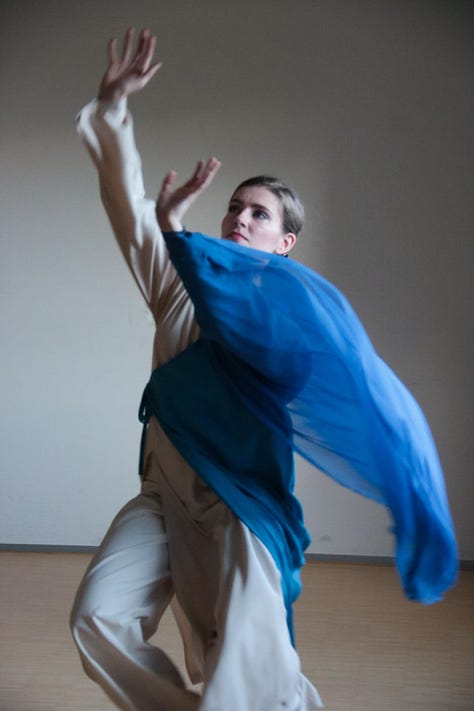


“Endometriosis is a dynamic disability, which means that the severity of symptoms can differ from day to day and from week to week. Some days I can't even stand up straight because of the pain and I'll drag my feet while walking because I can't lift my legs off the floor properly. And some days I am still the ballet dancer, eurythmist and hiker that most people know me as. Most days, I'm somewhere in between. It's all very confusing!”
“This chronic illness is not easy to deal with and a lot more research needs to be done. If you want to help, you can donate to a research initiative, or become a volunteer.”
“It can be so hard to keep going and keep advocating for yourself, but know you're not alone💛”
What can you do to help?
Share this post as widely as you can. You can also share the below images that Anne made, which summarize the main facts.
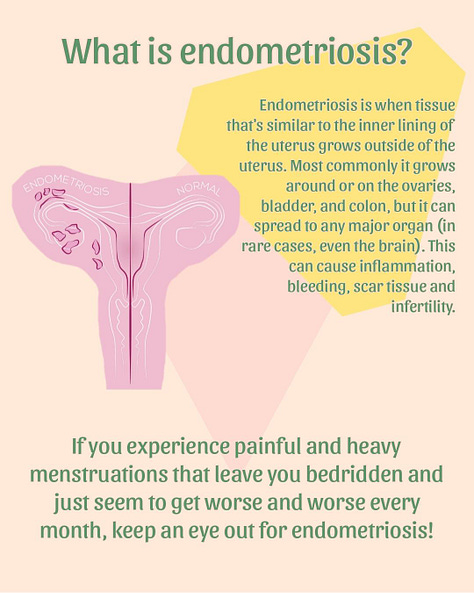
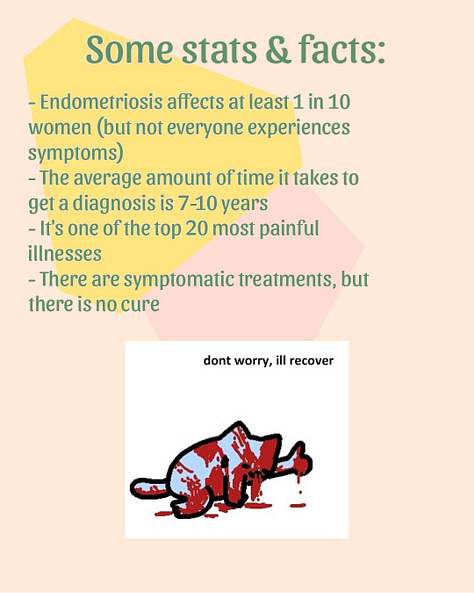
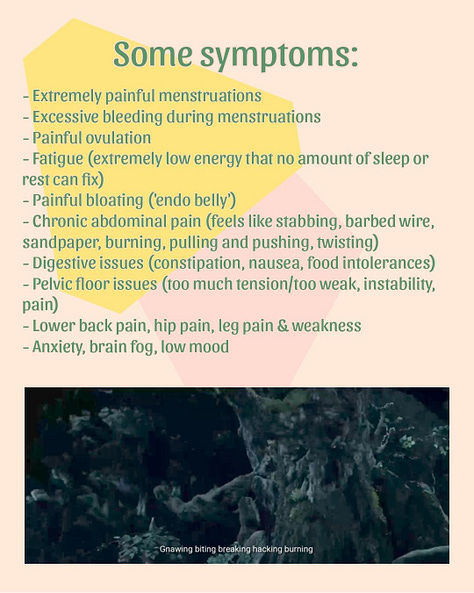
Raising awareness about endometriosis can help women be diagnosed early and help them improve their quality of life and possibly prevent a worsening of symptoms. It can also help improve societal understanding about this condition and the far-reaching consequences it can have for your work and social life. If nothing else, it can be incredibly reassuring to know that what you’re going through has a definitive cause and is more than ‘just a bad period’.
If you want to learn more about this topic, or want to check out organisations near you, check out these links:
Key facts about endometriosis: https://www.who.int/news-room/fact-sheets/detail/endometriosis
Quick history of Endometriosis Awareness Month: https://www.endofound.org/how-did-endo-awareness-month-begin-five-fast-facts
List of non-profit organizations around the world providing support and information about endometriosis: https://endometriosis.org/support/support-groups/




